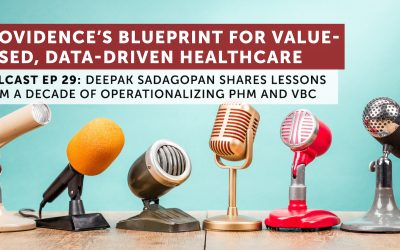
How much is too much?
The recommendations for meaningful use paid a fair amount of attention to the issue of consumer/patient access to their medical records. The big question, however, is just how much access is appropriate? Does one let the consumer see absolutely everything within the record including all notes despite how esoteric they may be, challenging to understand and potential for mis-interpretation? For some perspective:
A very thoughtful, extremely funny and intelligent physician who goes by the twitter handle of @doc-rob wrote about his own practice’s deliberations on the subject and the comments are just as insightful as his.
The Boston Globe had an article in today’s edition on Beth Israel’s decision to let their customers/patients have full access to the complete record.
And the Wall Street Journal’s own Health Care Blog also drew attention to the Boston Globe article with again, some great comments.
Outside of mental health, where there are some extremely valid reasons for not sharing clinician notes, the consumer should indeed have full access for as we have seen in countless other industry sectors, information liberation solves far more problems that it creates.
CCHIT looking to become contortionist?
This week, CCHIT’s Mark Leavitt hosted two townhall meetings to present changes that CCHIT is considering in its certification process. Prompting these changes is CCHIT’s clear desire to be the go-to certification entity for all “certified EHRs” which is the only technology that will receive reimburse under the HITECH Act. Going through the slidedeck our quick conclusion was that CCHIT is bending over backwards to try and address concerns in the market about their certification process.
What Chilmark likes about the proposed changes:
A three tiered process that acknowledges different technologies and architectures for EHRs (e.g. modular apps and roll-your-own) that fall outside of the common EMR vendor model upon which CCHIT was founded.
A pricing model that is fair and reasonable.
What Chilmark is not so crazy about:
Like anything, the devil is always in the details and what CCHIT presented is still pretty thin on details. At first glance, we see a growing complexity in the certification process as often times, software does not abide by strict boundaries. This is especially true from EMR-Comprehensive vs. EMR-Modular.
Not convinced that CCHIT has the resources available to keep up with technology developments and changes to insure innovative products reach the market quickly. More complexity is typically a time sink of major proportions.
The HIPAA and EMR blog’s author, John did sit in on both CCHIT townhall meetings and has a good write-up/analysis that is worth the read.
Mark Leavitt also wrote a piece for California Health Care Foundation’s iHealthBeat providing his perspective on the monumental changes coming to healthcare and of course the great role his organization plans to serve in those changes. My advice to Mark, don’t count your chickens before they hatch.
Get a Life
Last Friday, the Pew Charitable Trust released their latest study on consumer use of the Internet for health. Chilmark has a lot of respect for their work which is always thoughtful, well-reasoned, applies good methodology and results always have a few surprises. Unfortunately, have yet to read the full report, only the post that the lead reseacher, Suzannah Fox, wrote on the report. Do know this though, if you are even remotely interested in understanding how the public is using the Internet to address their health issues and also want to understand underlying demographic differences, just go read the report. I’ll be doing that myself on Sunday as I recover from the infamous Harpoon Brewery to Brewery ride tomorrow.




Do you want to off-load the content development tasks of Chilmark Research to an info-zealot, John?
I have worked as a quality writer/doc control specialist at a manufacturer of ophthalmic and dermatology lasers, earned a medical coding certificate (ICD-9) and closely follow ICD-10 and ANSI 5010 implementation.
Clinical workflow analysis must precede HIT selection; failing that, chaos and anger soon follow.
PHR use by every consumer will spur greater adoption of EHR/EMR by providers as they seek to catch up with demand (and their changing revenue base). Providers have been “dragging their heels” resisting CMS warnings about ICD-10 and HIT since 1994. Consumers’ PHRs that demand health data from providers who aren’t able to deliver will lose patients to providers who say “Yes, I’ll send the data right now.”
I can shoulder the workload if you care to delegate it.
Kel